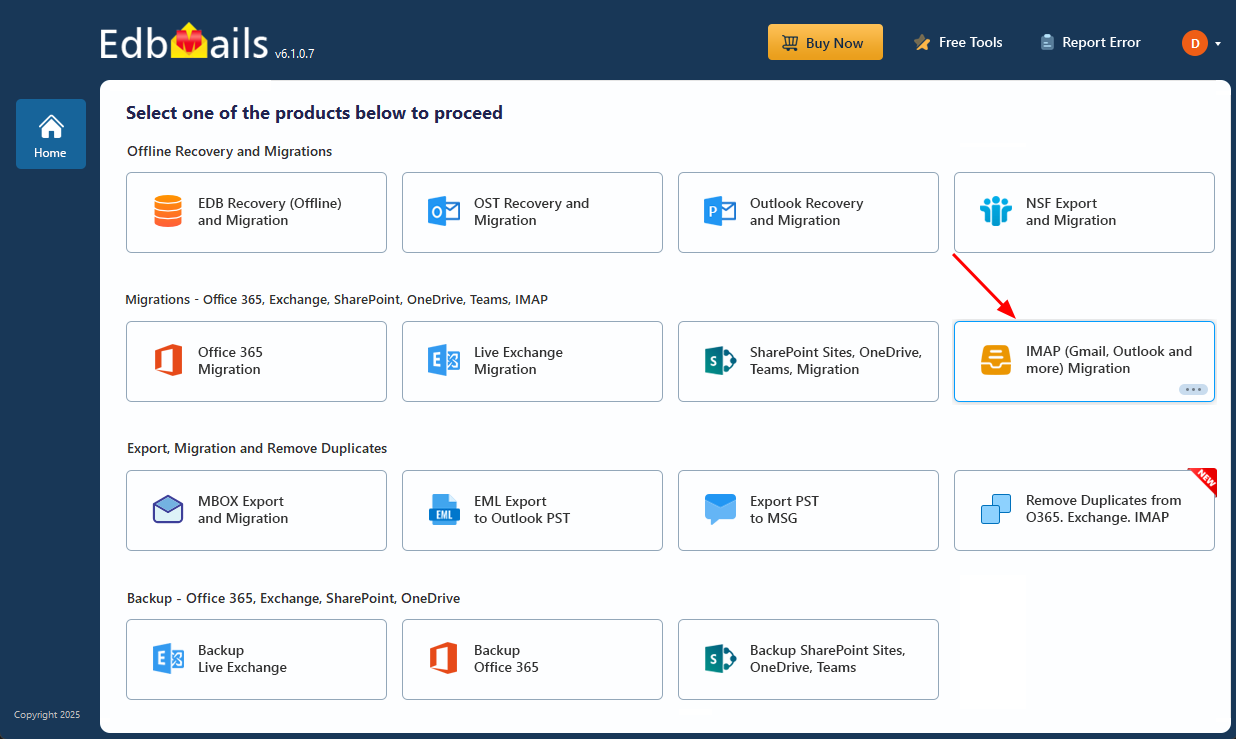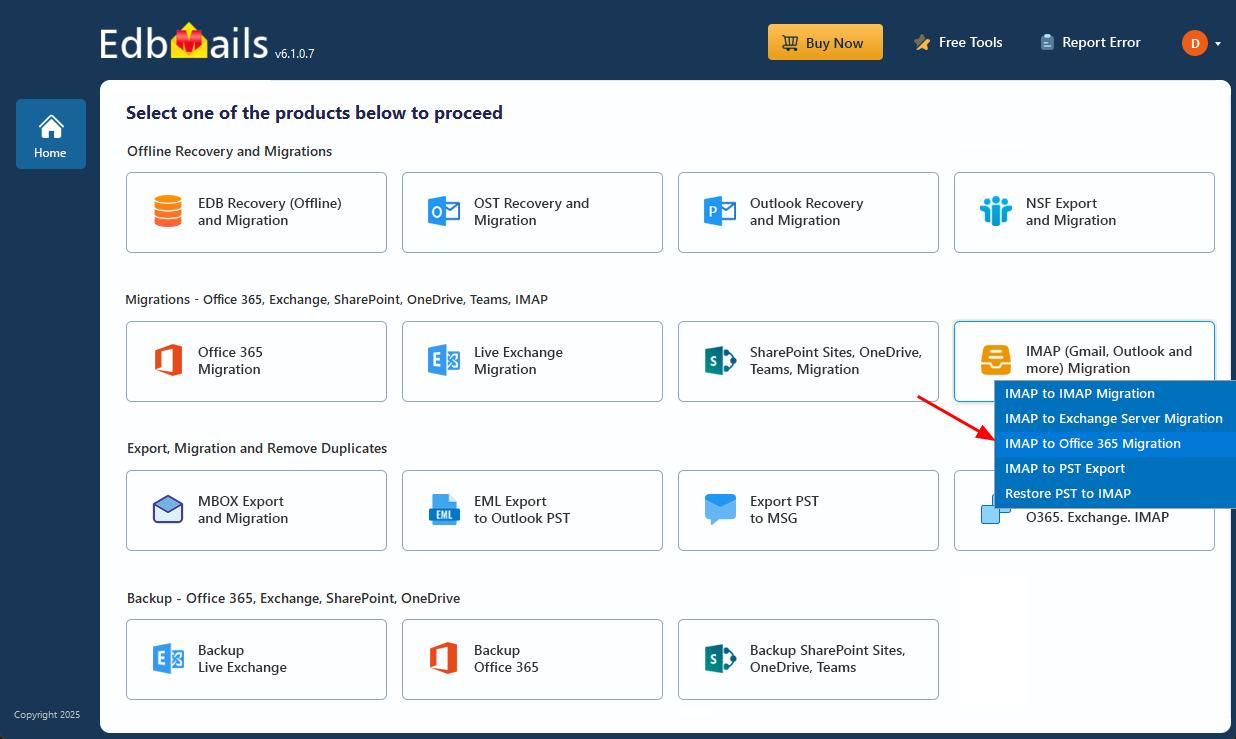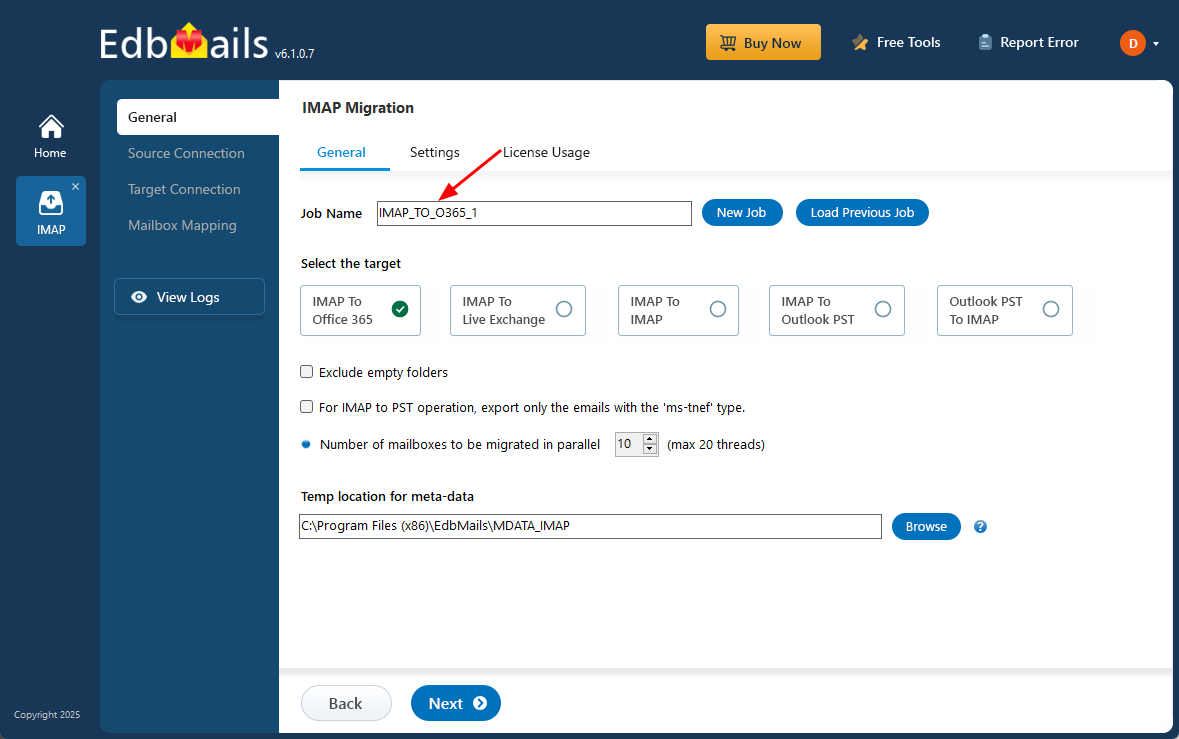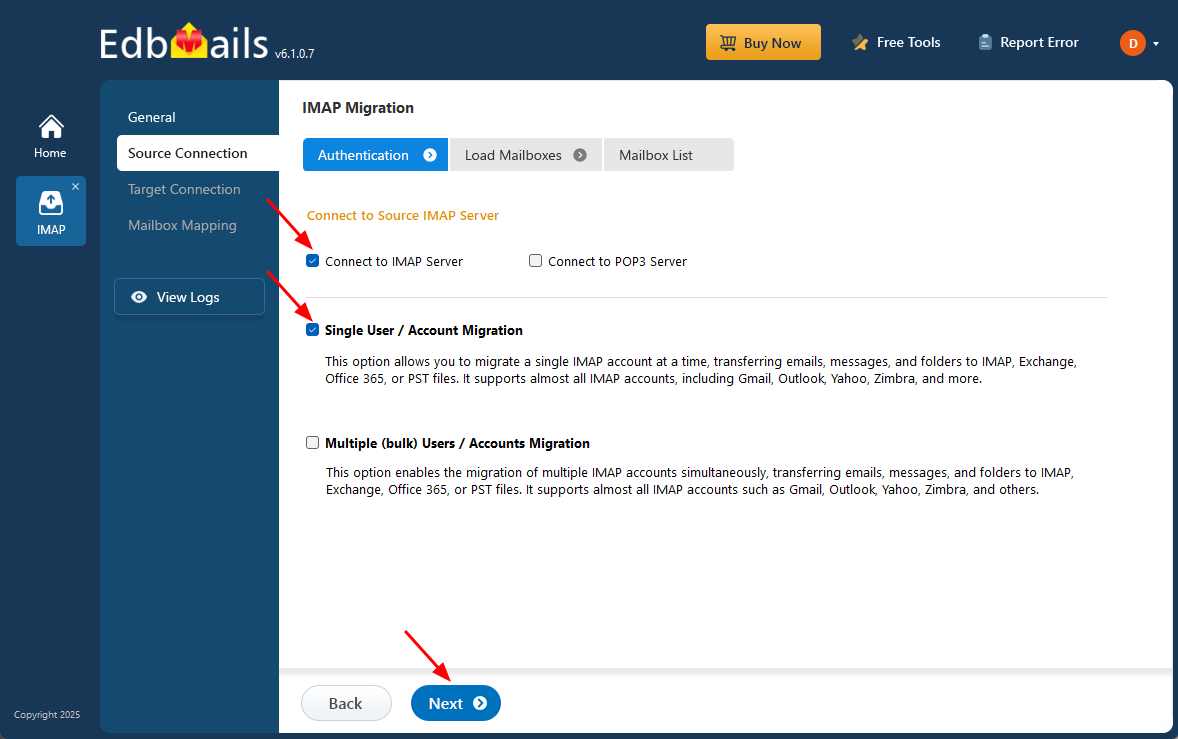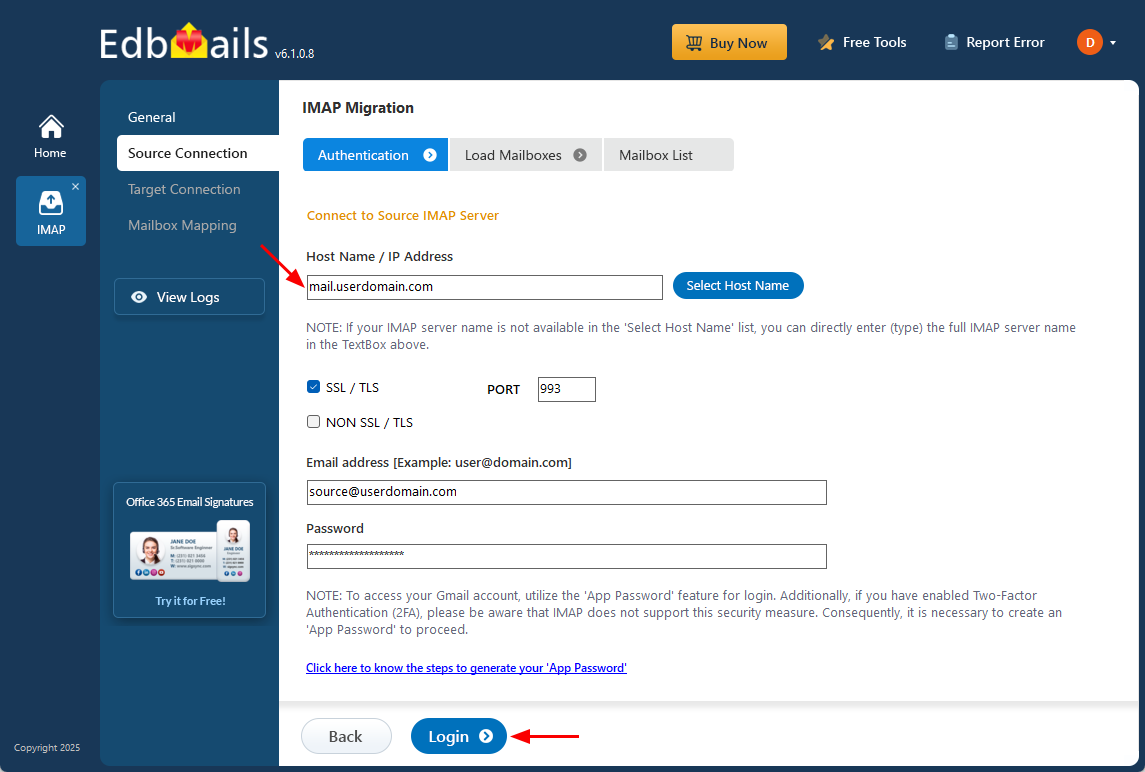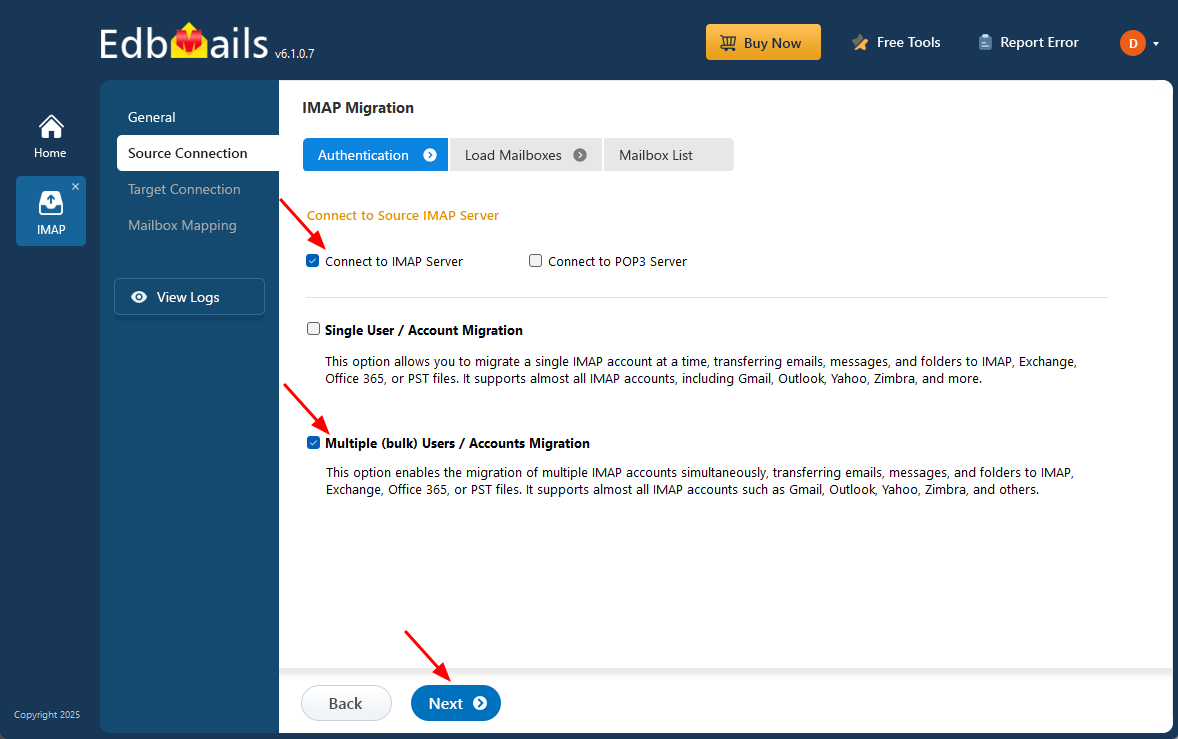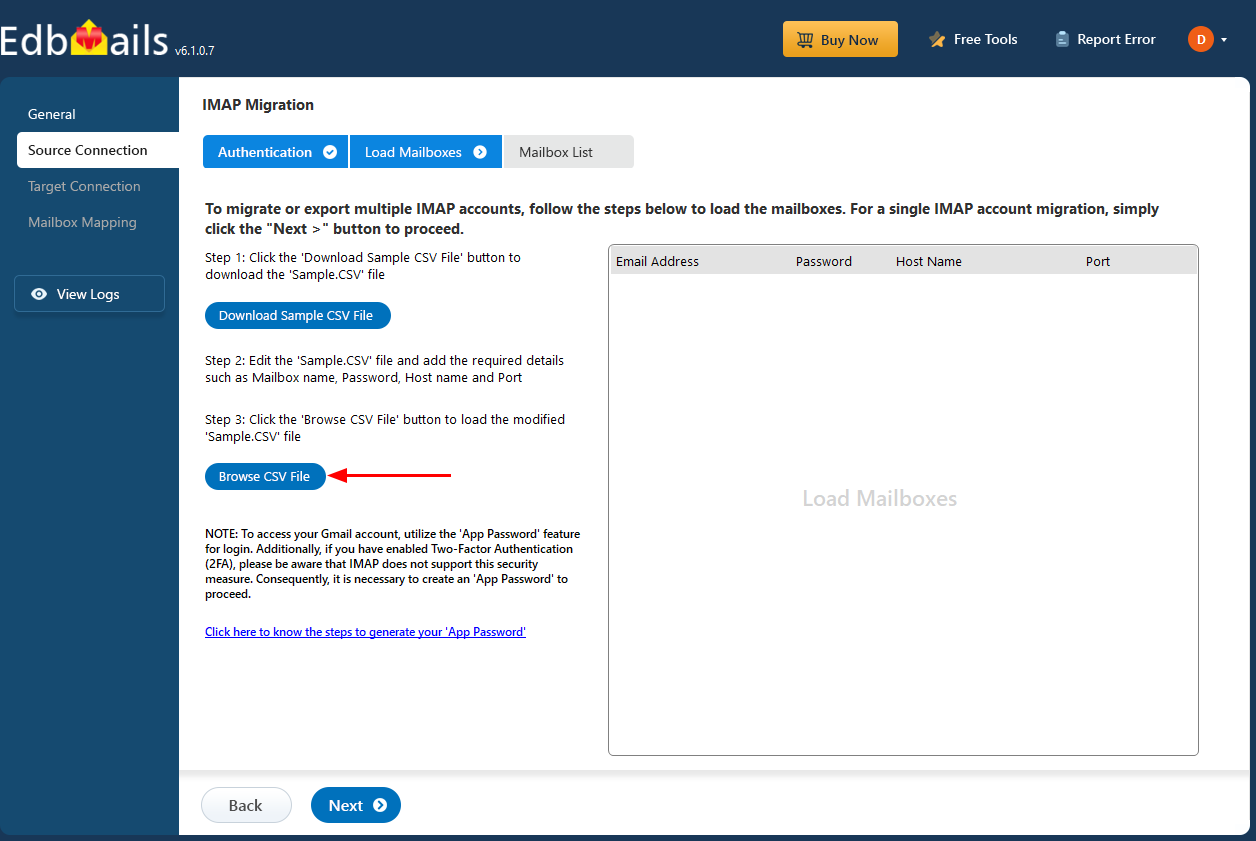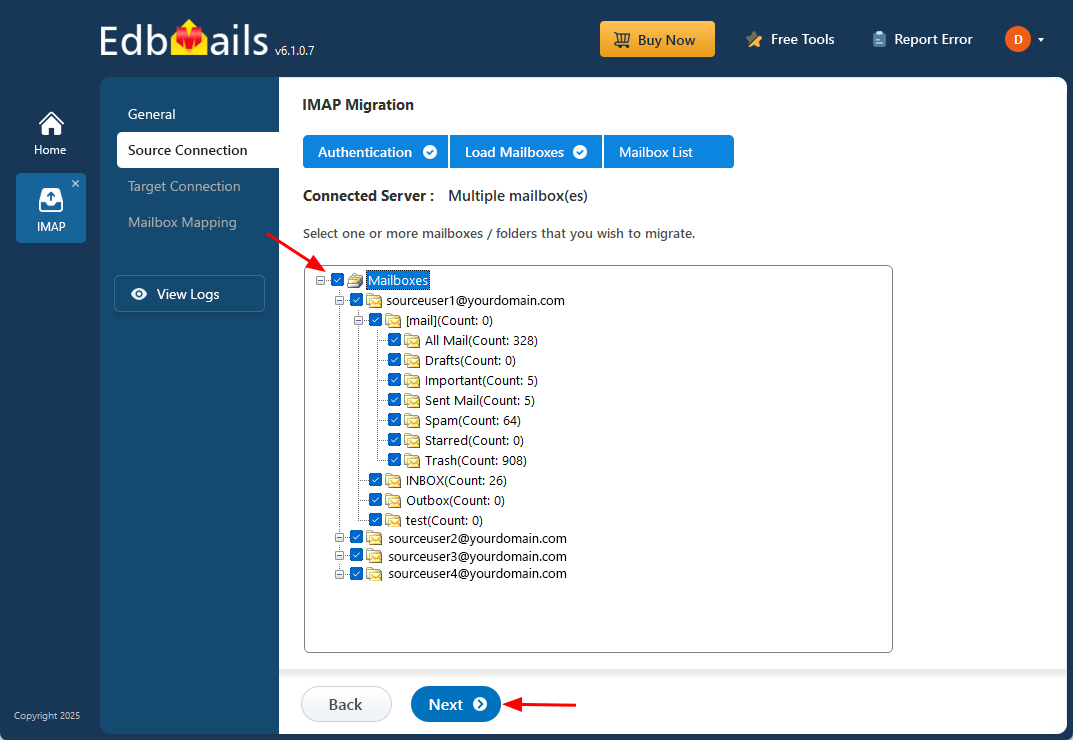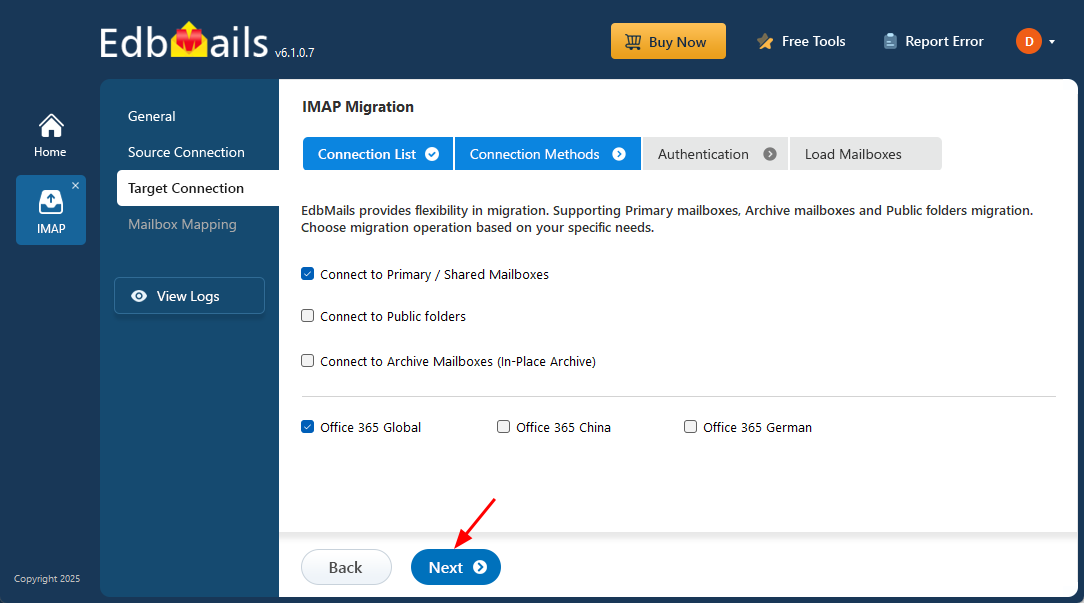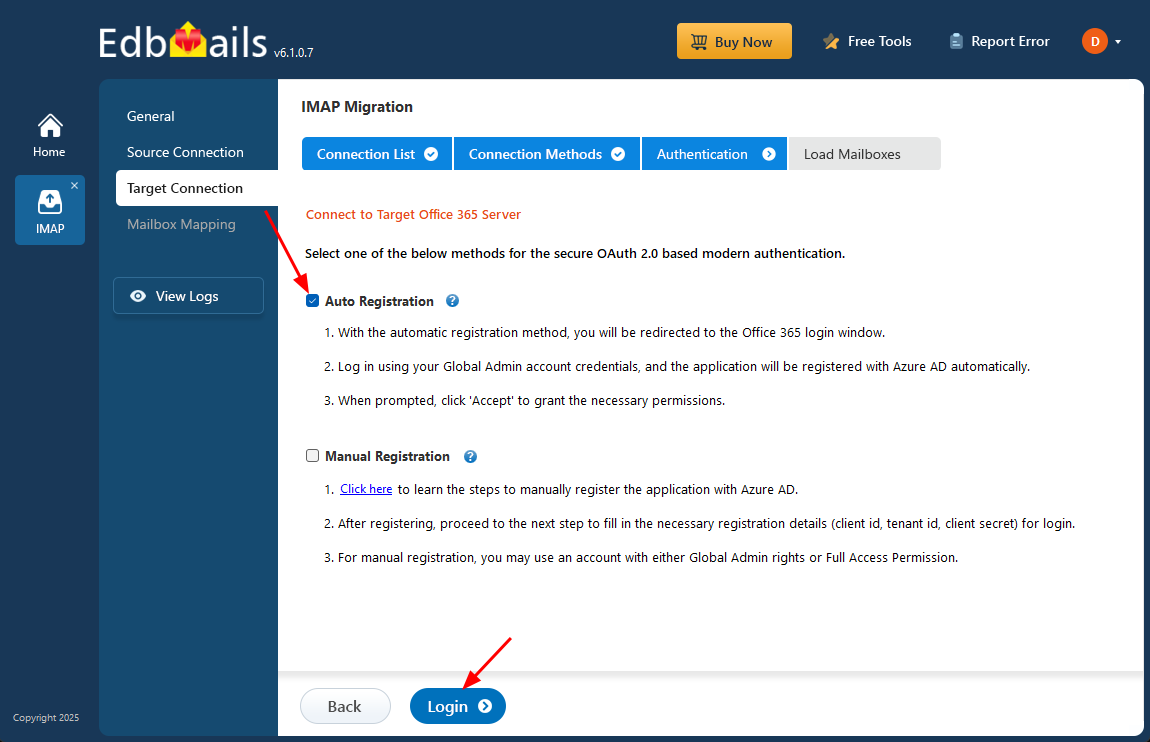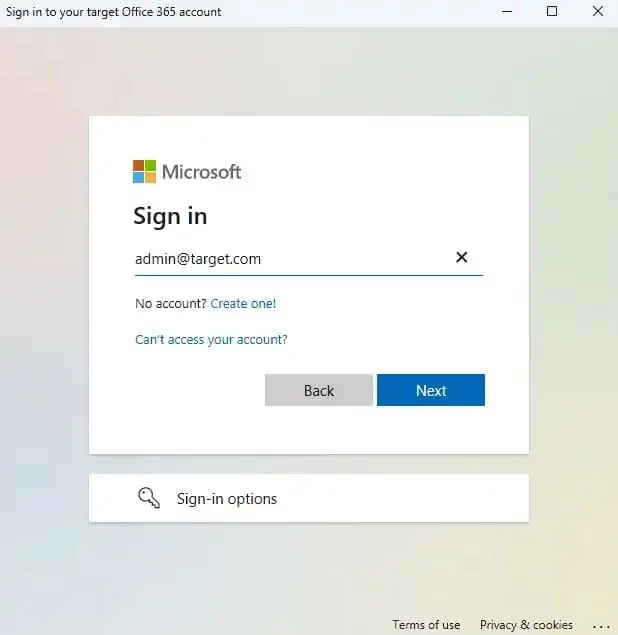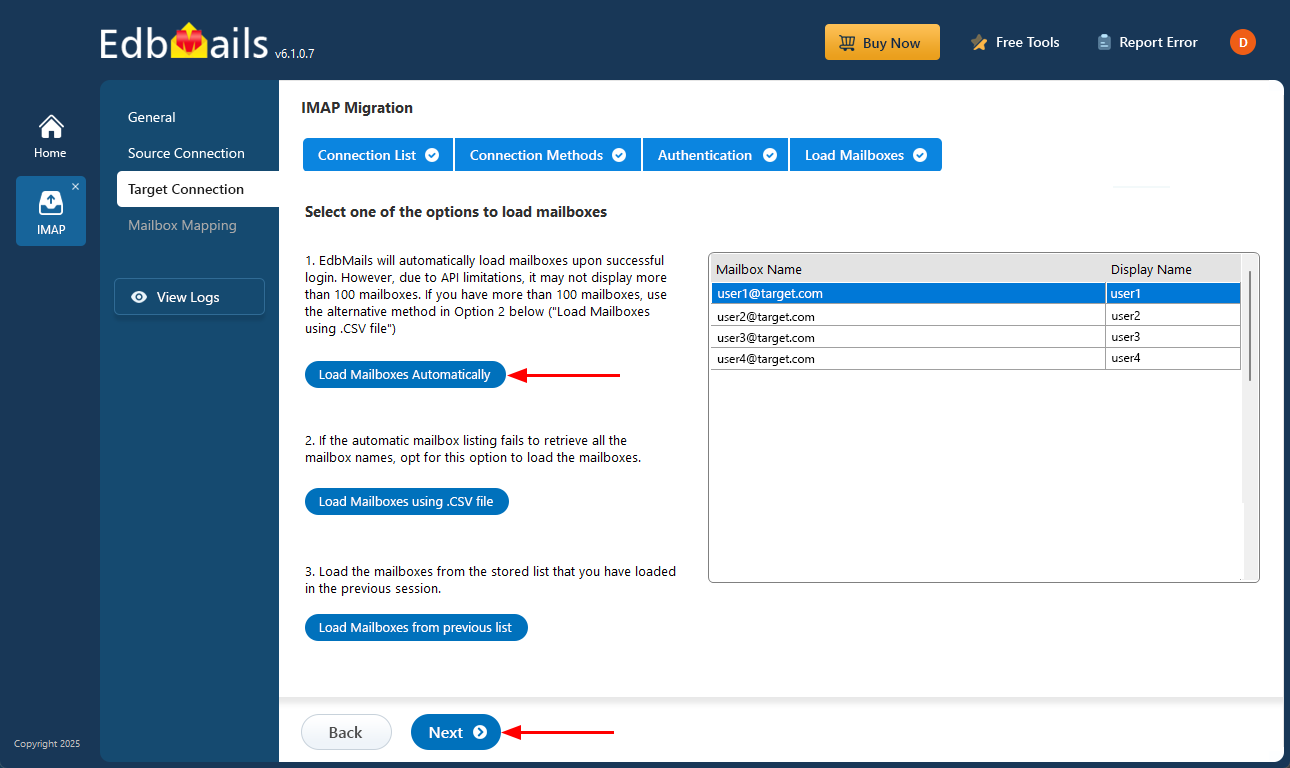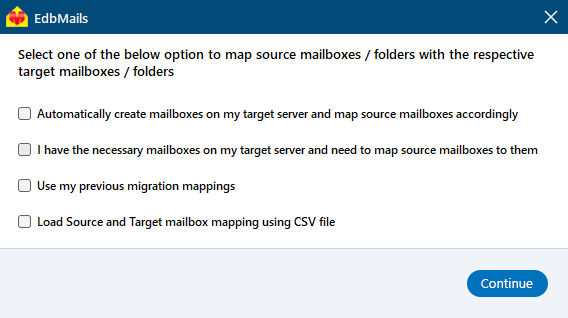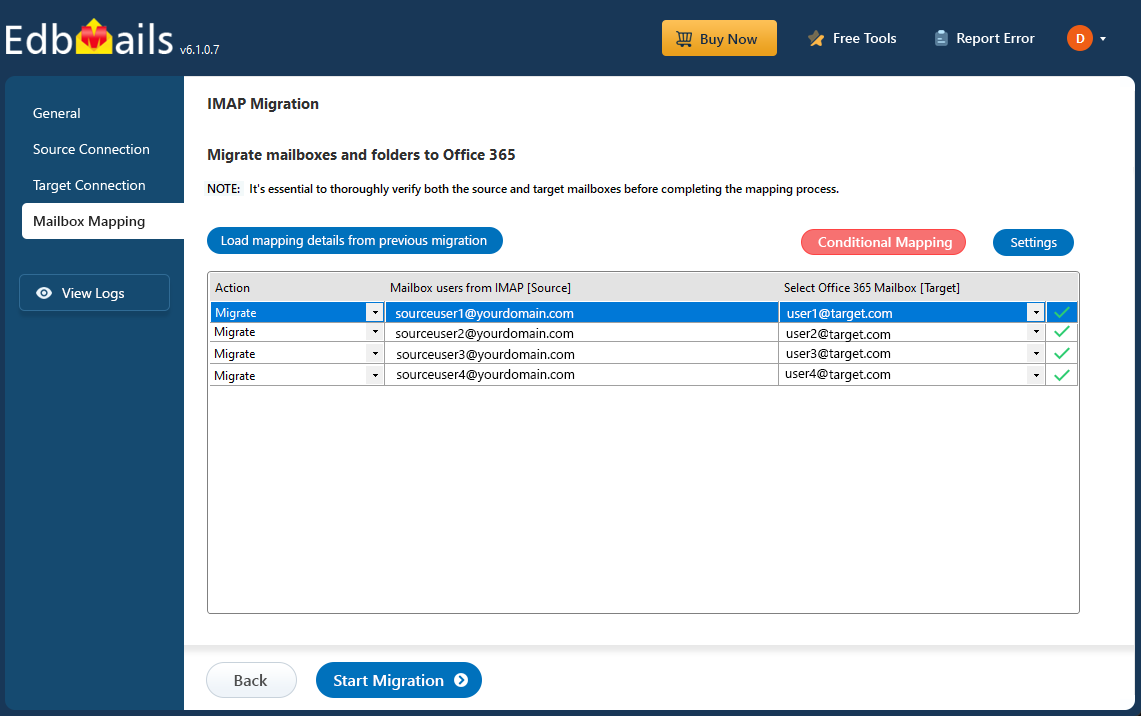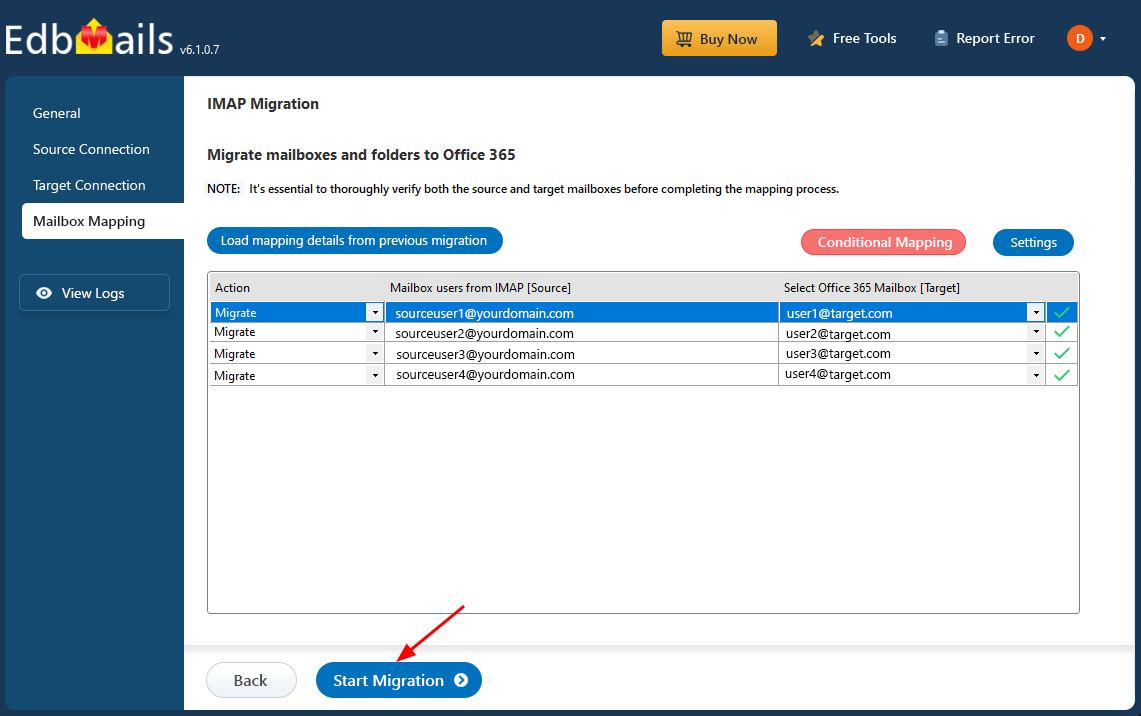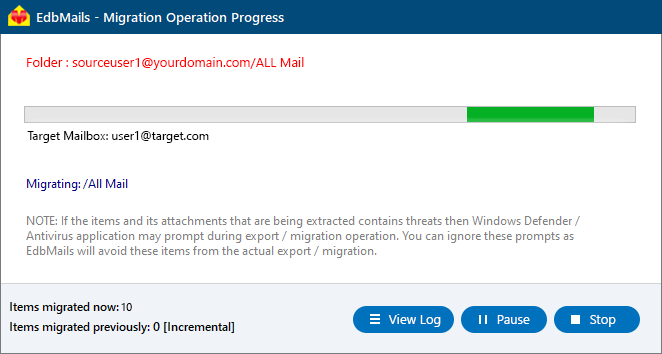Migrate Horde emails to Office 365
Looking for a reliable way to migrate your Horde emails to Office 365 (Microsoft 365)? You're in the right place. This step-by-step guide will help you transfer your emails seamlessly from Horde to Office 365 while maintaining full control over your data. Whether you're an IT administrator, a business user, or an individual seeking a better email experience, this guide provides the clarity and confidence you need for a smooth and secure migration.
Horde, part of the cPanel Webmail suite, is a commonly used email client that supports basic email management, task tracking, and calendar functions. However, as cloud-based platforms like Microsoft 365 continue to gain traction for their superior security, scalability, and collaboration capabilities, many users are choosing to upgrade. Migrating from Horde to Office 365 is a strategic move that offers modern productivity tools, enterprise-grade data protection, and seamless access across devices, making it a worthwhile transition for today’s communication needs.
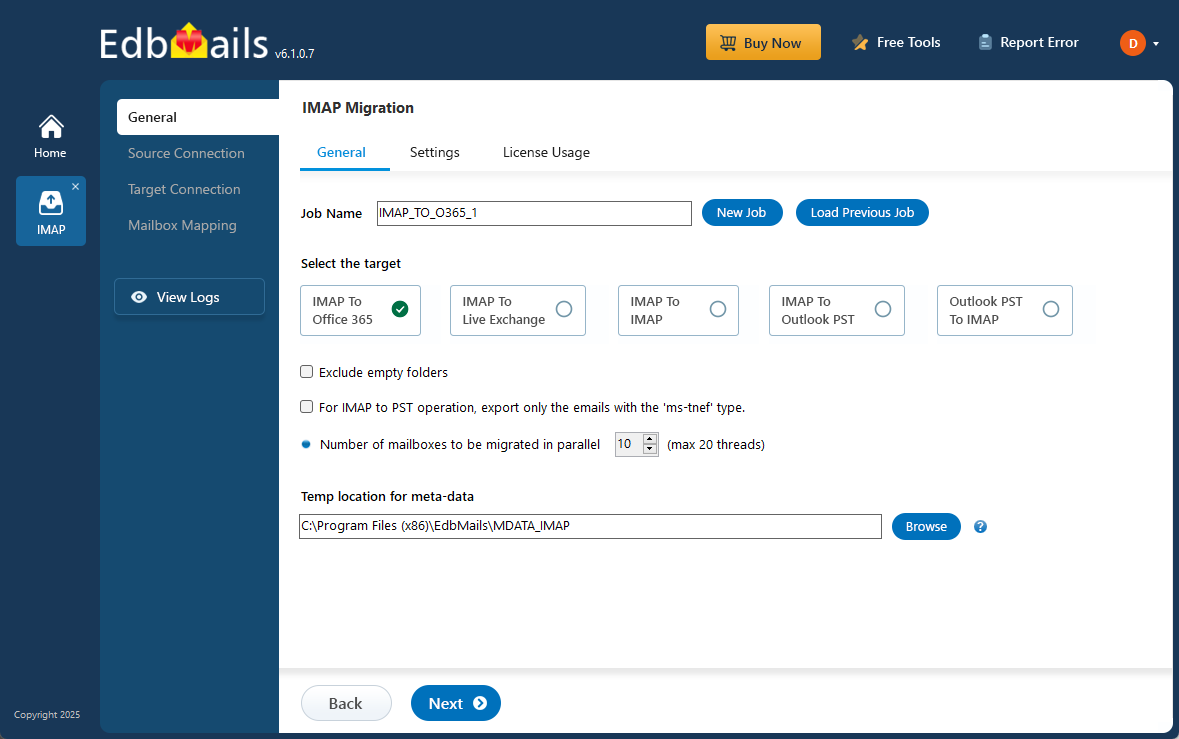
Though the process might seem challenging, especially without a built-in manual method, the good news is that automated solutions such as EdbMails IMAP migration tool make this task straightforward. Ready to learn how to transfer your Horde emails to Office 365? Let’s dive into the details.
User Query
"I have been using Horde Webmail for managing my emails, and now I need to migrate all my emails, including attachments, to Office 365. Can anyone help me with the detailed steps to complete this migration? I’m new to this process and would really appreciate a step-by-step guide to ensure everything transfers without issues." - Jane, New York
Why should you migrate emails from Horde to Office 365?
- User interface (UI): Horde's interface is functional but lacks modern design elements. Office 365 offers a streamlined, intuitive UI that enhances user experience with clear navigation and easy access to emails, tasks, and calendars, boosting productivity.
- Storage: Horde has limited storage, forcing users to manage inbox space manually. Office 365 provides scalable storage solutions, eliminating concerns about email limits and ensuring seamless archiving of important emails and attachments for future access.
- Spam filtering: Office 365 outperforms Horde with its advanced spam filtering and security features. It effectively blocks phishing attacks and malicious emails, ensuring a cleaner inbox and protecting your data from cyber threats with built-in defenses.
- Integration: While Horde operates independently, Office 365 integrates smoothly with the entire Microsoft ecosystem. This connectivity enables seamless collaboration across Word, Excel, Teams, and OneDrive, allowing real-time sharing and access to essential tools.
- Accessibility: Horde’s web-based access limits usage to a single platform. Office 365 offers cloud-based access, ensuring you can view, send, and organize emails from any device such as a laptop, phone, or tablet boosting productivity from anywhere.
These reasons make Office 365 the ideal choice for migrating from Horde email. EdbMails offers a secure and easy solution for seamless Horde email to Office 365 migration.
Professional solution for exporting Horde email to Office 365
Migrating emails from Horde to Office 365 can seem overwhelming, but with the right automated solution, the process becomes simple and efficient. EdbMails is a powerful tool that streamlines this migration, making it accessible to both professionals and beginners. It ensures that your emails are transferred seamlessly, without any loss of data or functionality. The tool offers a smooth migration process that guarantees accuracy and reliability, making the transition to Office 365 hassle-free.
EdbMails IMAP migration tool simplifies this migration with its user-friendly interface for migrating emails from Horde to Office 365. With delta migration, it only transfers changes made since the initial migration, saving time and reducing data transfer. Its automatic mailbox mapping ensures mailboxes are correctly mapped, preventing errors. Advanced filter settings let users select specific emails based on criteria such as date, subject, or attachments, ensuring only relevant emails are moved. Additionally, EdbMails enables migration with zero downtime, keeping your email communication uninterrupted. This makes the transition smooth, efficient, and secure, with full control over the process, ensuring zero disruption to your business operations.
Horde email to Office 365 migration plan
Planning is one of the most important steps before you begin the Horde email to Office 365 migration. Here is a checklist of points to consider before you migrate.
- Determine the size of the data and the number of mailboxes you want to migrate.
- Make a list of all the data from the Horde email that you want to transfer.
- Create appropriate user mailboxes on Office 365 and assign licenses to them.
- Ensure you have enough network capacity and bandwidth to migrate.
- Communicate the migration plan and flow to your end users.
Horde email to Microsoft 365: Pre-migration activities
- Find the IMAP server name of your Horde email server. You can find this information from your server’s dashboard settings or by connecting your email system to Outlook.
- Have the users email address, passwords, IMAP hostname and port number.
- Create mailboxes on your target Office 365 server. You can choose the option to automatically create target mailboxes in EdbMails. If you prefer to create them manually, refer to the links below.
- If you have a custom email domain from your hosting provider to which you want to migrate and receive emails, you must add and verify the domain on Office 365.
Steps to add a custom domain to Office 365 and Steps to add DNS records to connect your domain. - Configure Office 365 to send and receive large messages.
Follow the steps to increase the message size on Office 365 to 150MB and see tips to optimize IMAP migration to Exchange online
.
Step-by-step guide to migrate Horde emails to Office 365
Step 1: Download and install EdbMails IMAP migration software
- Download and install EdbMails on your computer.
- Launch the EdbMail application and log in using your registered email address and password. If you don’t have an account, click ‘Start Your Free Trial’ to begin using EdbMails instantly without registration.
- Select the option ‘IMAP (Gmail, Outlook & more) Migration’.
- Select ‘IMAP to Office 365 Migration’.
- A default job name is assigned automatically when you begin the migration. If you prefer to personalize it for easier tracking or organization, especially when handling multiple migrations click on ‘New Job’ and enter a custom name.
Step 2: Connect to the source Horde email server
- To migrate a single Horde email account, choose the ‘Single User / Account Migration’ option and click ‘Next’ to proceed with the configuration.
- Select the correct IMAP hostname for your Horde email account from the list, or manually enter it if not listed. Then, enter your email address and password to continue with the connection setup.
- Click the ‘Login’ button.
- To migrate multiple Horde mailboxes, choose the ‘Multiple (Bulk) Users/Accounts Migration’ option and click ‘Next’.
- Click ‘IMAP Migration CSV File’. It will load the sample CSV file to your local drive.
- Open the CSV file and fill in the necessary details, including the email address, password, IMAP server hostname, and port number for each mailbox. After completing the entries, save and close the updated CSV file.
- After updating the CSV file, save it and close it.
- Then, click the 'Load Modified CSV File' button, open the updated CSV file and click ‘Next’ to proceed.
Step 3: Select the mailboxes or folders to migrate
- Choose the mailboxes or specific folders you wish to migrate, then click ‘Next’ to continue.
Step 4: Connect to target Office 365 server
- Click the ‘Add New Connection’ button to configure a fresh connection to your target Office 365 account. If you have already set up a connection, select it from the list and click ‘Connect to Existing’.
- Choose the necessary connection options and click ‘Next’ to continue.
- Choose your preferred secure authentication method for the target Office 365 and click the ‘Login’ button.
- Authenticate on Microsoft sign-in page.
- After logging into your target Office 365 server, select how you’d like to load the mailboxes. EdbMails will automatically display the available mailboxes, but because of Microsoft API limitations, it may only show up to 100. If you have more than 100 mailboxes, choose the ‘Load Mailboxes using .CSV file’ option.
Step 5: Horde to Office 365 mailboxes mapping
- Select a preferred option to map the source mailboxes and folders with their corresponding mailboxes and folders on the target Office 365 account.
- EdbMails lets you automatically create the required mailboxes in your target Office 365 account.
- It also automatically maps your source Horde mailboxes and folders to the matching ones in Office 365, making large migrations easier to manage.
Step 5: Start Horde to Office 365 migration
- Verify the mailbox mapping, then click the ‘Start Migration’ button to begin the migration process.
- Click the ‘View Logs’ button to access the full migration report. The report includes comprehensive details such as mailbox mapping, a summary of the overall migration, and the item count for each migrated mailbox and folder.
Horde email to Office 365 post-migration tasks
- Step 1: Modify MX records to direct email to Office 365.
Update MX records for directing email to the new server. Additionally, configure the Autodiscover record to ensure that migrated mailboxes connect smoothly with email clients like Outlook.
- Step 2: Set up a new Outlook profile for users in the new domain
If users encounter issues connecting Outlook to Office 365 mailboxes, manually configure their Outlook profiles in the new domain.
- Step 1: Modify MX records to direct email to Office 365.
Horde email to Office 365 migration troubleshooting
For troubleshooting, check out our knowledge base articles. If you have additional questions, browse the FAQs or engage with our customer care team for personalized assistance.
Benefits of EdbMails for Horde email to Office 365 migration
- Retain meta properties
EdbMails ensures that all meta properties such as sender, recipient, subject, date, and other important attributes are retained during the Horde email to Office 365 migration process. This guarantees that the integrity of your email data is maintained and no crucial information is lost during the transition.
- No file size restrictions
With EdbMails, you won’t encounter file size limitations when migrating Horde emails to Office 365. This flexibility allows you to migrate large mailboxes without worrying about size restrictions, ensuring a smooth and uninterrupted migration for all your email data.
- Batch transfer
EdbMails supports batch migration, enabling the transfer of multiple mailboxes simultaneously. This feature reduces migration time and ensures efficiency when handling large numbers of accounts, making it a great choice for businesses needing to migrate large volumes of email data quickly.
- Clear navigation and immediate feedback
The intuitive user interface of EdbMails ensures clear navigation throughout the migration process. Real-time feedback allows users to monitor progress, providing immediate updates on the status of the migration. This keeps the user informed and confident throughout the entire process.
- Compliance with data retention policies
EdbMails ensures that the migration process complies with organizational data retention policies. It handles data securely, keeping email records in line with compliance standards. This makes it ideal for businesses needing to meet legal or regulatory data retention requirements during migration.
Frequently Asked Questions
- How long does the Horde email to Office 365 migration take?
The duration depends on migration time, mailbox size, number of accounts, and network speed.
- Will my attachments and folders be preserved?
Yes. All emails, folders, attachments, and metadata (such as sender, date, and subject) are fully preserved, ensuring complete data integrity after migration.
- Is there downtime during migration?
No. EdbMails enables zero-downtime migration, allowing users to continue sending and receiving emails while the transfer runs in the background.



